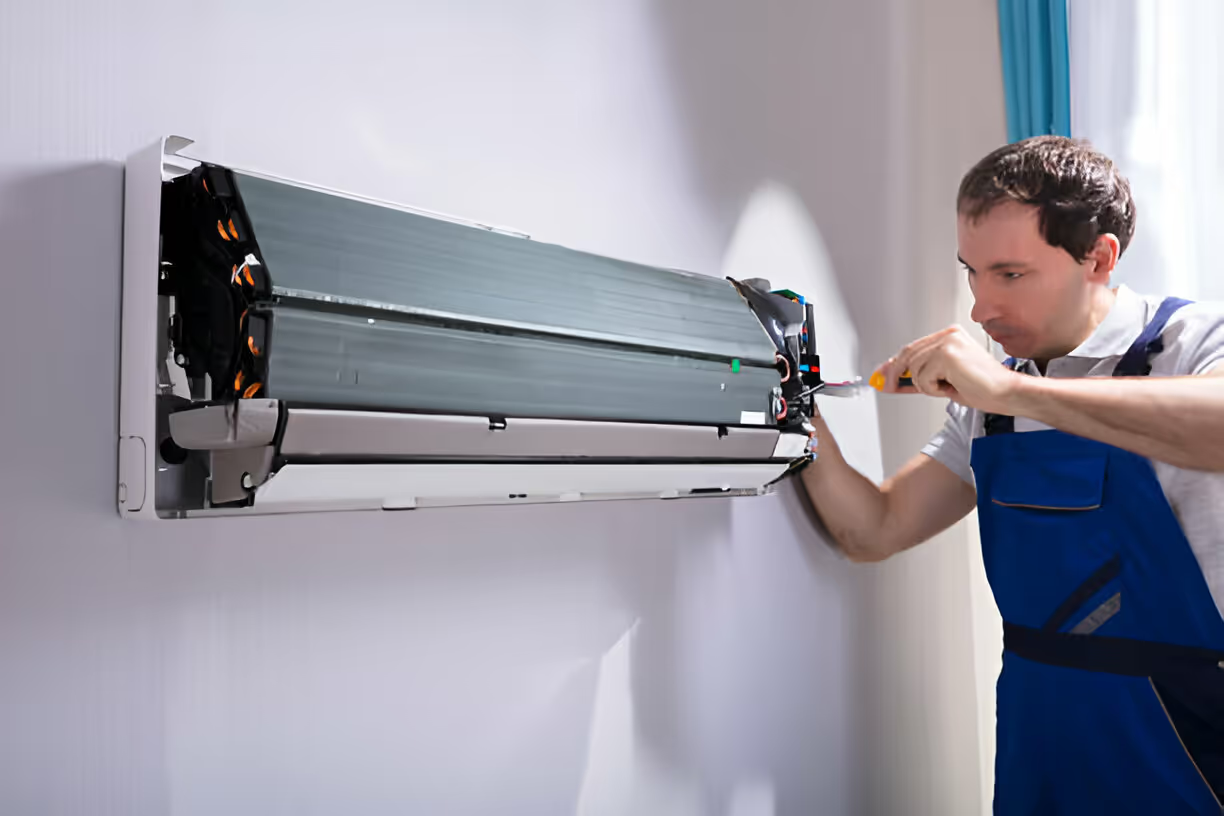Mini-Split Maintenance in Thonotosassa, FL


Why regular mini-split maintenance matters in Thonotosassa, FL
Thonotosassa’s subtropical climate means your mini-split runs year-round. Humidity, seasonal pollen, and frequent summer thunderstorms create conditions where:
- Coils and drain lines clog or grow biological films, causing reduced cooling and possible leaks or odors.
- Filters load quickly with pollen and dust from yard work or open windows.
- Electrical components and controls face higher stress from heavy daily run cycles.
- Refrigerant issues or airflow restrictions become noticeable only after efficiency has already dropped.
Timely maintenance restores performance, improves indoor air quality, and helps maintain manufacturer warranty requirements.
Common mini-split maintenance issues in Thonotosassa homes
- Clogged indoor unit filters and reduced airflow
- Dirty evaporator and condenser coils causing reduced cooling capacity
- Blocked drain lines or clogged condensate traps leading to water leaks or odors
- Low or leaking refrigerant resulting in poor cooling and higher energy use
- Loose electrical connections, worn capacitors, or failing control boards
- Inaccurate thermostat or remote control calibration
- Outdoor unit debris buildup, corrosion, or poor clearance affecting heat exchange
What a professional seasonal tune-up includes
A comprehensive mini-split tune-up performed by a trained technician typically covers both indoor and outdoor components. Core items include:
- Initial system inspection and history review to note prior issues and warranty status.
- Indoor unit filter cleaning or replacement (depending on filter type) and homeowner filter-care guidance.
- Evaporator coil cleaning to remove dust, pollen, and biological films.
- Condensate drain line and pan cleaning plus a test to confirm unblocked flow and no leaks.
- Outdoor condenser coil cleaning and debris removal to maintain heat transfer efficiency.
- Refrigerant level check and leak inspection; performance testing to confirm proper charge (refrigerant service if required).
- Electrical and control inspection: tighten connections, test capacitors, check contactors and control boards.
- Airflow and blower motor check: measure airflow and inspect fan operation and bearings.
- System performance optimization: verify proper setpoints, calibrate controls, and recommend insulation or shading improvements if helpful.
- Operational test and report: run system through cooling and heating cycles, document baseline performance and recommended follow-ups.
Practical maintenance recommendations for Thonotosassa residents
- Schedule at least two professional tune-ups per year: spring (pre-summer) and fall (pre-cooler months). In Thonotosassa’s climate, a spring tune-up before heavy cooling use is critical.
- For high-use units, units in dusty or high-pollen locations, or units serving sensitive occupants (allergies), consider quarterly checks or an intermediate filter clean.
- Homeowner care: clean or rinse washable filters every 2–4 weeks during heavy use. Keep indoor unit intake areas dust-free and maintain clear space around outdoor units (at least 2–3 feet).
- After storms or power outages, inspect outdoor units for debris and verify the system cycles normally before heavy cooling is required.
- Keep records of maintenance dates and condition reports to preserve warranty eligibility and to identify gradual performance trends.
Performance optimization and energy-saving checks
Maintenance visits are also an opportunity to improve system efficiency and comfort:
- Verify refrigerant charge and repair leaks to restore cooling capacity and reduce runtime.
- Adjust fan speeds and airflow to balance comfort and energy use.
- Identify and correct airflow obstructions or poorly located indoor heads that create uneven temperatures.
- Recommend thermostat setpoint strategies and humidity management tips that reduce runtime while preserving comfort in Thonotosassa’s humid climate.
- Inspect for minor repairs (loose mounting hardware, vibration isolators) that prevent larger failures.
Benefits of enrolling in a routine maintenance plan
Enrolling in an ongoing maintenance plan provides predictable care and system documentation. Typical benefits of a structured plan include:
- Consistent scheduling on the recommended cadence for Thonotosassa climates.
- Documented service records that help with warranty and resale value.
- Early detection of issues before they become costly failures during peak summer demand.
- Steady efficiency, which keeps monthly energy use lower and indoor comfort more consistent.
- Cleaner indoor air and reduced microbial growth risk in humid months.
What enrollment typically looks like
Enrollment in a mini-split maintenance program is straightforward and designed to suit homeowner needs. Typical steps are:
- Initial system assessment: one technician inspects all mini-split heads and the outdoor unit, documents current performance, and recommends a plan frequency based on usage and local conditions.
- Plan selection: choose a schedule (biannual is standard for Thonotosassa), with options for more frequent visits for high-use systems or homes with allergies.
- Baseline tune-up and documentation: the first scheduled tune-up establishes baseline performance metrics and a maintenance history for each indoor unit.
- Scheduled seasonal visits: spring and fall tune-ups are scheduled in advance to maintain consistent care through Thonotosassa’s hot, humid summers.
- Service records and follow-up: each visit includes a written maintenance report and recommendations for repairs or upgrades, and future visit reminders are set.
Final notes on maintenance priorities in Thonotosassa
Because of persistent humidity and year-round cooling demand, Thonotosassa homes benefit most from proactive mini-split maintenance. Regular tune-ups reduce the risk of mid-summer failures, preserve efficiency, and improve indoor air quality. Following the inspection, cleaning, and optimization steps outlined here will help your ductless system deliver reliable comfort and lower operating costs over its service life.
Service Areas


